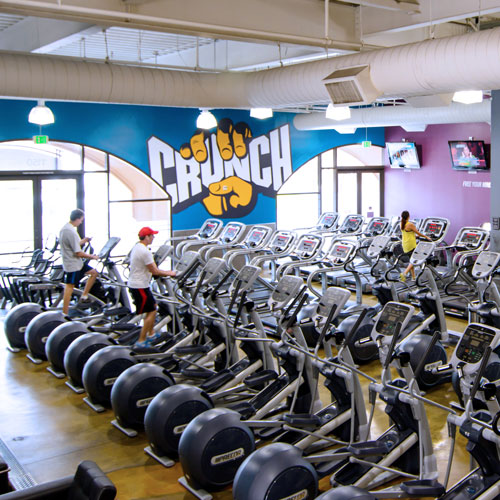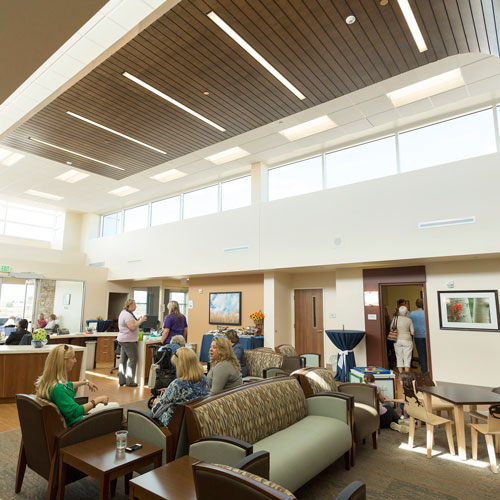
You’ve been in the industry for more than a decade. What do you like most about working in hospitality?
I get to work on so many projects, and no two are exactly alike. At Highgate, we have more than 80 unique properties and rooms around the world with brands like Hilton, Westin, Crown Plaza, and Marriott. We manage properties and do real estate investment and development, so there’s a wide variety of work.
What do you spend most of your time doing?
Overseeing anything that is capital-related. It might be as small as a ballroom renovation in one asset or as big as the development and build of a new luxury property. I spent a lot of time on major renovations and development of nonhotel buildings and land.
Tell me about developing your expertise over time. What has helped the most?
I graduated from Cornell’s School of Hotel Administration and got a job right away at the Bryant Park Hotel. In the beginning, it was all about volunteering to do any job I could. I did anything anyone asked me to do, whether that was working in HR or as a cashier or anything else. That got me introduced to people all over the company and to different developers in New York. I started working in development and interacting with designers. I got my hands dirty in everything from finding light bulbs to putting together bed frames to watching my colleagues develop new assets and brands.

What have been some favorite projects over your nine years at Highgate?
We did a big conversion of the Argent Hotel in San Francisco, making it the Westin San Francisco Market Street. It was a $29 million project. We redid every room and totally remade the entire space, including a new destination restaurant and pedestrian walkway. Additionally, value-added opportunities like meeting spaces and exterior upgrades really made it work.
In Arlington, [Virginia,] we upgraded an existing Hyatt in a creative way. We were able to reskin the building over its façade, which helped with the schedule and budget. It was a night-and-day change.
Now, we’re putting the final touches on ancillary spaces at a project called the Row NYC. We bought it a long time ago, and it hadn’t been touched in 20 years. We’ve been redoing every bit of the building with new rooms and public spaces. Plus, we’ve created a jewel-box multitenant condo that creates value.
Highgate has a lot going on right now. What are some other current projects?
Right. The Row itself is a $140 million redevelopment. We’re also doing a Residence Inn by Marriott in Lower Manhattan, across from the World Trade Center, and we just completed a new-build Hilton Garden in Times Square. Right next to that is Knickerbocker, a luxury asset that we’re taking back to a hotel space. We’re also doing new development in the Meatpacking District that will feature rooftop event space with a pool.

But Highgate isn’t just in New York; you’re in several diverse markets. What’s most imporant when creating the right property in each city?
The design and plan has to match the asset and property type. It’s fun to do the super high-end stuff, but that’s not right for every project. We do our homework and work with all internal teams to evaluate regions, crunch the numbers, and walk the market to understand demands. We also have to provide a distinct experience in different cities related to value. We can’t provide the same room for $496 in Manhattan and $195 in the Midwest.
So what makes you successful in the different markets?
The planning. You have to prepare and anticipate because there is always the unexpected. Especially with existing buildings, you’ll always uncover something nobody knew about, and each team has to recognize and address those issues. A lot of our competitors might take three months for design and 20 weeks to build, but we expedite this greatly by doing model rooms really fast. We do them in about four weeks because the sooner you get into the room, even if you pay a premium, the faster you can kick the tires, see if the design works, and fix any problems. It also serves as a great marketing tool.

What’s changing in your properties?
Technology plays a huge role today. It’s not enough to have a flat-screen in each room of a luxury property; it has to be huge, with Bluetooth, mobile controls, sound bars, and other features. We have to build flexible spaces because technology is moving so fast—faster than our need to renovate. We have to design for what exists today and what is coming tomorrow. Guests also bring their own devices now, so charging capacity and capability is huge. We have to provide adequate places to charge anywhere and everywhere, with power outlets and USB outlets that are easy to access without moving furniture.
Is that impacting the way you interact with customers?
Absolutely. We’re moving more into the concept of using smartphones to check in and even enter rooms. We have to embrace these changes in the way we plan because we may not need big front desks at a lobby if fewer people are going to line up at check-in. We’re also interacting more online. Guests these days rely on reviews and other online information, so we’re always checking comments and feedback because it’s so important to making purchasing decisions.
What’s next for Highgate?
We’re getting more involved in Europe. We’re doing a new build in England and looking at a number of other properties and opportunities. A lot of things are taking shape now that the worst of the recession is behind us, and it’s an exciting time.



